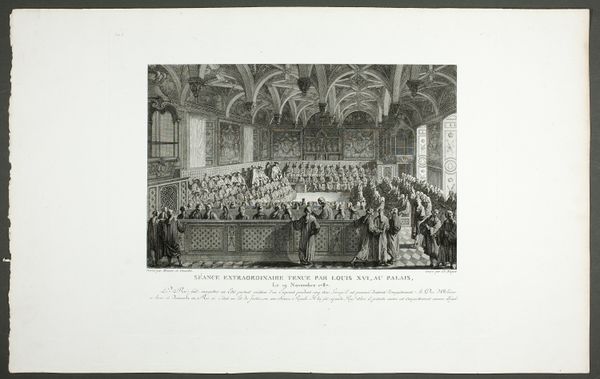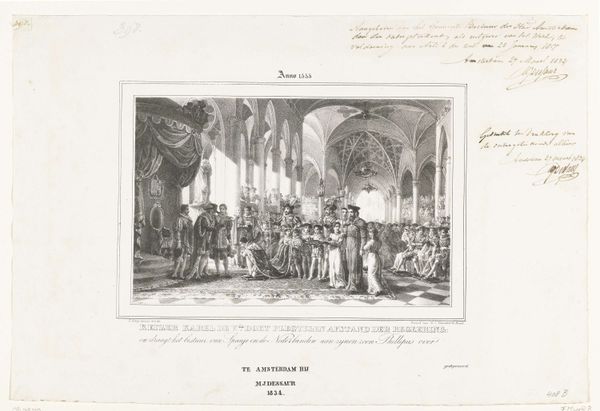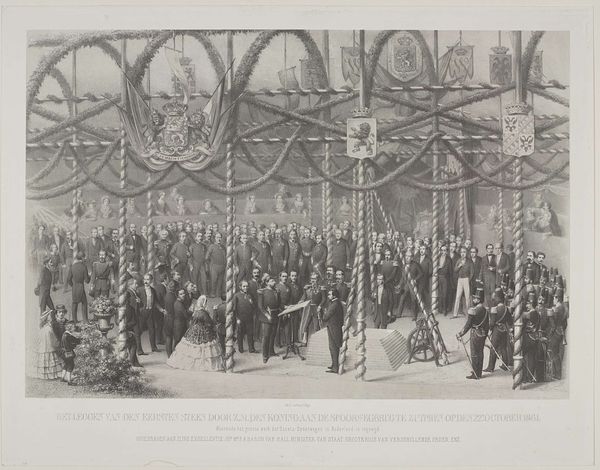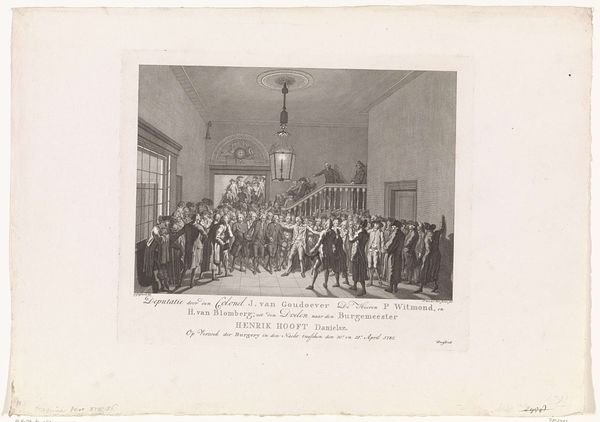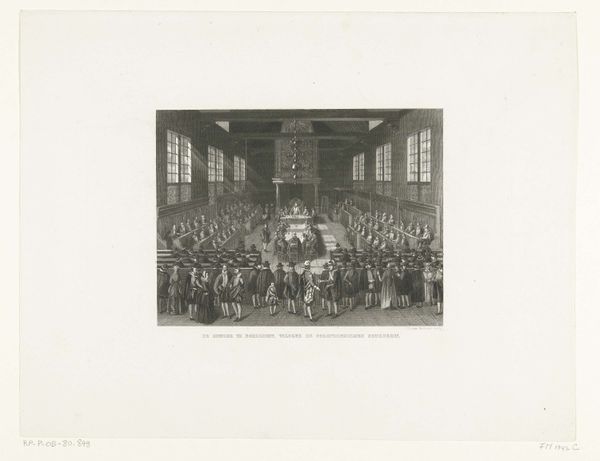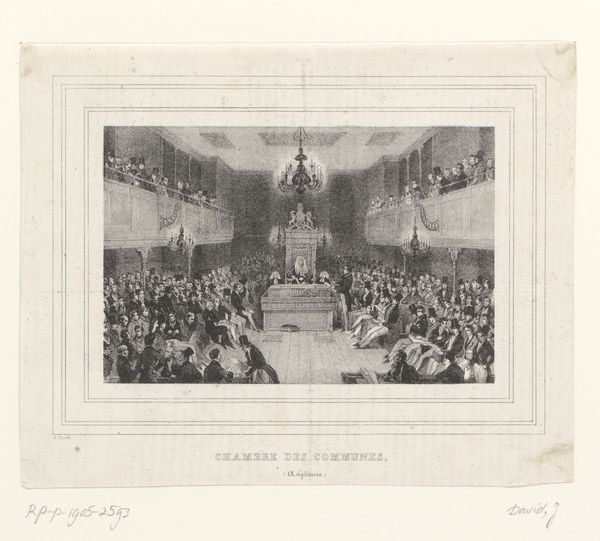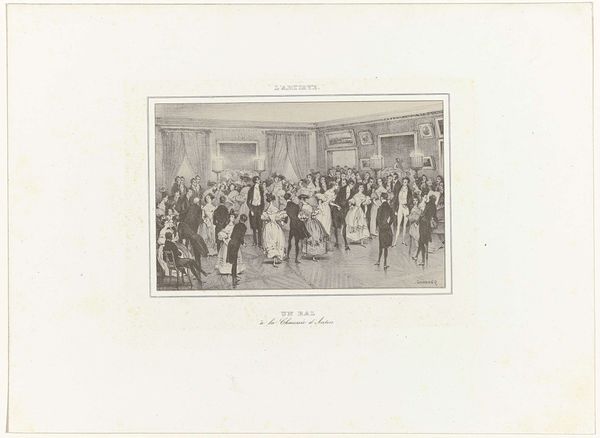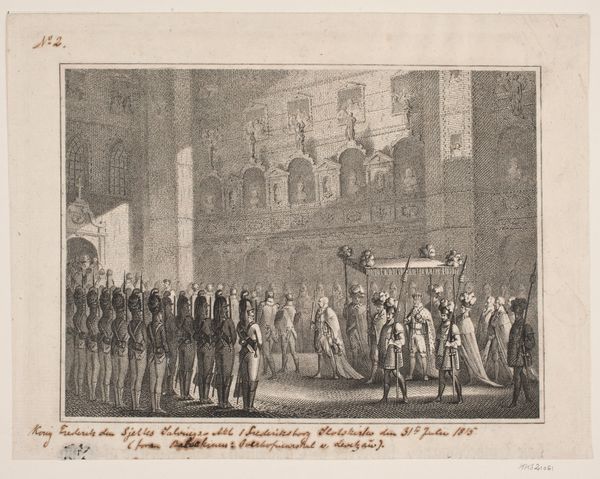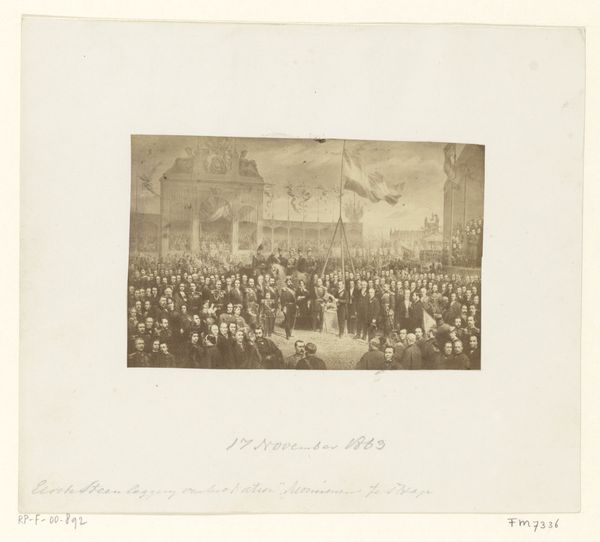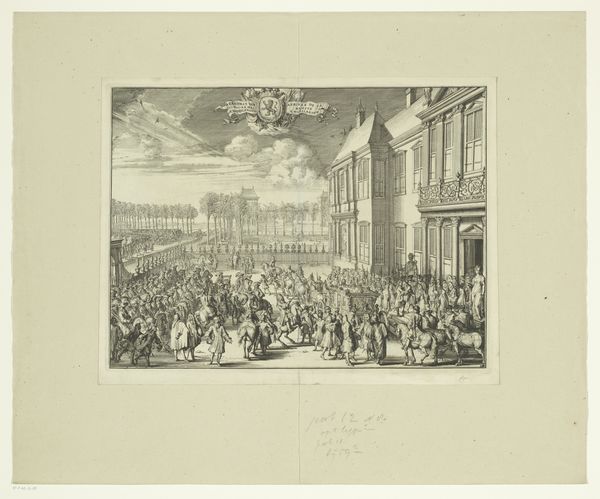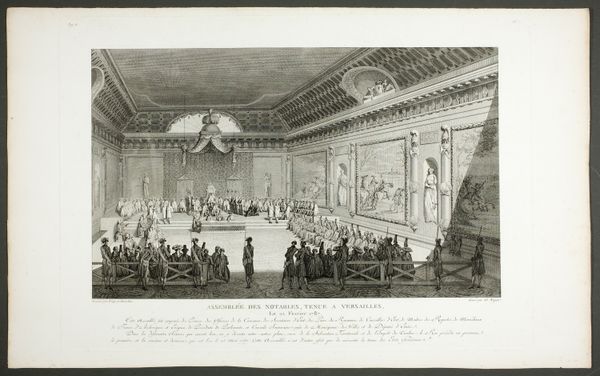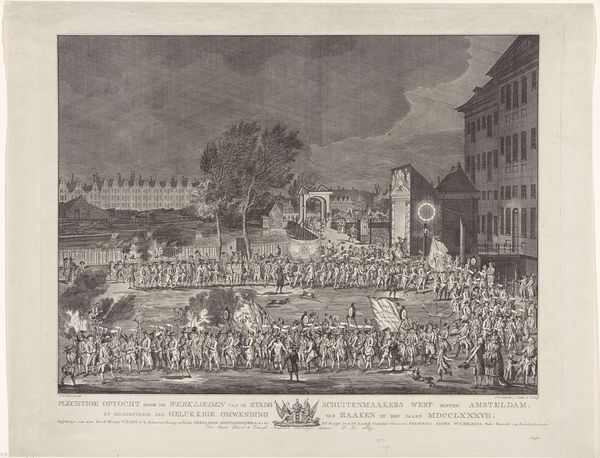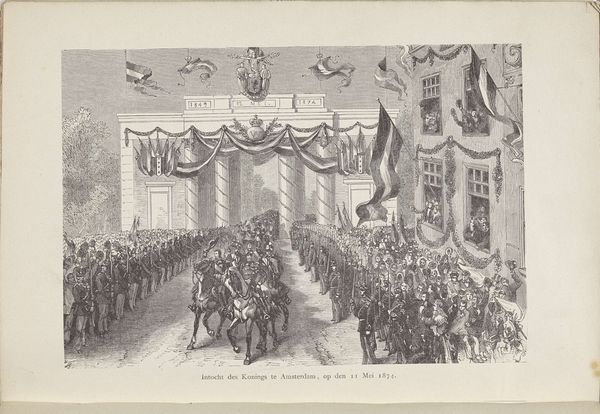
Seat of Justice Held at Versailles, Tableaux historiques de la Révolution Française 1798 - 1804
0:00
0:00
drawing, print, etching, paper
#
drawing
#
neoclacissism
#
narrative-art
# print
#
etching
#
paper
#
genre-painting
#
history-painting
#
academic-art
Dimensions: 175 × 266 mm (image); 267 × 335 mm (plate); 316 × 501 mm (sheet)
Copyright: Public Domain
Curator: Here we have "Seat of Justice Held at Versailles," part of the "Tableaux historiques de la Révolution Française" series, created between 1798 and 1804. The artist is Abraham Girardet, and the artwork is a print, using etching on paper. Editor: It feels intensely crowded, claustrophobic almost. Everyone is packed in. All those white wigs... there's a real sense of power being concentrated in a small space. Curator: The sheer number of figures does contribute to that effect, doesn’t it? Remember that in terms of visual symbols, this etching presents itself as a historical record of a very specific "lit de justice," a formal session of the French parliament, held by the King at Versailles. The figures are deliberately depicted in very specific roles and attires. Editor: The composition reflects that hierarchy—the elevated dais with the royal figures overlooking a sea of lesser figures. It really emphasizes the social stratification of the period. I imagine for the disenfranchised at that time, images such as this became emblematic of the inequity of the status quo and fueled popular dissent. Curator: That’s a crucial point, that context. The paintings on the back walls seem to be almost an omen, in what looks like representations of battles. And the symbols—the fleur-de-lis, the royal insignia—all carry a very particular cultural and historical weight, especially in the aftermath of the Revolution. They speak to the attempt at reclaiming old authority. Editor: Exactly, the artist clearly understood that the act of visually recording and disseminating this image has its own power. What narrative is supported? Are we supposed to marvel at the crown and its traditions, or question it, through a lens of inequality and popular revolution? The act of seeing these people assembled also has its own symbolic force—all the estates literally represented. Curator: Ultimately, Girardet provides a seemingly objective depiction of an event laden with subjective and potentially contradictory readings. It acts almost as a visual touchstone for the complexities of the period. The density of detail almost begs you to try and disentangle meaning. Editor: Well said, because whether intentional or not, these frozen moments became fodder for ideologies about who has a right to representation and recognition in the political landscape. A stark reminder of both progress achieved, and continuous work that must be prioritized even now.
Comments
No comments
Be the first to comment and join the conversation on the ultimate creative platform.
